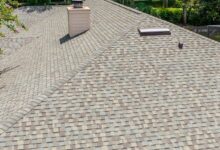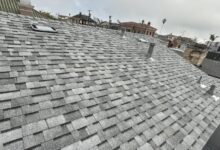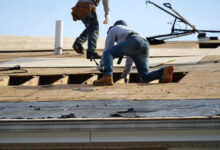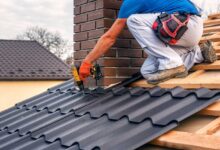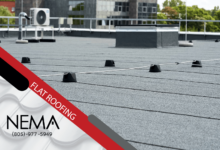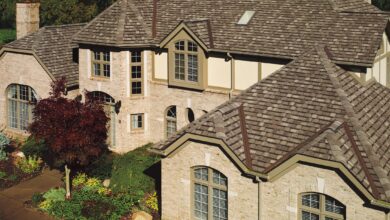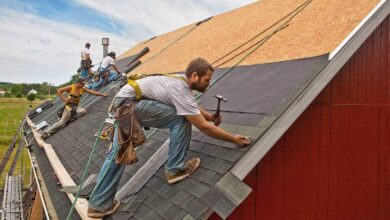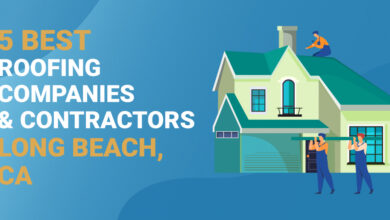Burlington Roofer: Your Roofing Guide
Burlington Roofer: Navigating the complexities of Burlington’s roofing landscape can feel overwhelming. This comprehensive guide aims to simplify the process, providing valuable insights into the market, services offered, and crucial factors to consider when selecting a reputable roofing contractor. We’ll explore the various roofing materials available, their pros and cons, and the importance of obtaining necessary permits. Ultimately, our goal is to empower you to make informed decisions regarding your roofing needs.
From understanding the competitive market dynamics to navigating the intricacies of permit acquisition, this guide serves as your one-stop resource for all things Burlington roofing. We’ll delve into customer reviews, offering a transparent look at the experiences of homeowners in the Burlington area. This information, combined with practical tips for choosing a trustworthy contractor, will help you confidently tackle your next roofing project.
Burlington Roofers
The roofing market in Burlington, Vermont, is a dynamic sector influenced by factors such as weather patterns, the age of existing housing stock, and economic conditions. The city’s mix of residential, commercial, and industrial buildings creates a diverse demand for roofing services, encompassing everything from small repairs to large-scale replacements. Understanding the market’s characteristics is crucial for both homeowners seeking reliable roofers and businesses aiming to compete in this sector.
Burlington Roofing Market Overview
Precise statistics on the number of roofing companies operating solely within Burlington city limits are not readily available through publicly accessible databases. However, a significant number of roofing contractors serve the Burlington area, with many operating from nearby towns and cities in Chittenden County. Competition is therefore moderate to high, necessitating that businesses differentiate themselves through service quality, pricing, and specialized offerings.
Services Offered by Burlington Roofers
Burlington roofers typically offer a comprehensive range of services catering to diverse needs. These services generally include: roof inspections and assessments; roof repairs (addressing leaks, damaged shingles, etc.); complete roof replacements (using various materials like asphalt shingles, metal roofing, and flat roofing systems); gutter installation and repair; ice dam removal; and snow removal from roofs. Some specialized roofers may also offer services such as skylight installation or solar panel integration. Many companies also offer emergency repair services to address urgent roofing issues.
Pricing Structures of Roofing Materials in Burlington
The cost of roofing materials and labor can vary significantly based on several factors, including material selection, roof complexity, and the contractor’s overhead. The following table provides a general comparison of pricing structures for common roofing materials in Burlington, keeping in mind that these are estimates and actual costs can vary. It is crucial to obtain multiple quotes from reputable contractors before making any decisions.
| Roofing Material | Cost per Square (100 sq ft) | Lifespan (Years) | Notes |
|---|---|---|---|
| Asphalt Shingles (3-tab) | $800 – $1500 | 15-20 | Most common and affordable option. |
| Asphalt Shingles (Architectural) | $1200 – $2000 | 25-30 | More durable and aesthetically pleasing than 3-tab shingles. |
| Metal Roofing | $1500 – $3000+ | 50+ | Highly durable, long-lasting, and energy-efficient. Cost varies greatly depending on metal type. |
| Flat Roofing (Modified Bitumen) | $800 – $1500 | 15-20 | Suitable for flat roofs; requires regular maintenance. |
Types of Roofing Services Offered
Burlington Roofers provides a comprehensive range of services designed to meet all your roofing needs, from minor repairs to complete installations and ongoing maintenance. We understand that your roof is a crucial element of your home’s protection and value, and we’re committed to delivering high-quality workmanship and exceptional customer service. Our services cover a wide spectrum of roofing types and materials, ensuring a solution tailored to your specific requirements and budget.
Our services encompass three primary areas: repairs, installations, and maintenance. Repairs address existing damage, ranging from small leaks to significant structural issues. Installations involve the complete replacement or addition of roofing systems, incorporating various materials and styles. Maintenance focuses on preventative measures to extend the lifespan of your roof and prevent future problems. This proactive approach can save you significant costs in the long run by catching potential issues early.
Roofing Materials Used in Burlington
Burlington homes utilize a variety of roofing materials, each with its own set of advantages and disadvantages. The most common include asphalt shingles, metal roofing, and tile. Choosing the right material depends on factors such as budget, aesthetic preferences, and the climate.
Asphalt shingles are a popular choice due to their affordability and ease of installation. Metal roofing, while more expensive, offers exceptional durability and longevity. Tile roofing, often associated with a more traditional or upscale aesthetic, provides excellent protection against harsh weather conditions. Let’s delve into a more detailed comparison.
Comparison of Roofing Materials
| Material | Advantages | Disadvantages |
|---|---|---|
| Asphalt Shingles | Affordable, readily available, easy to install, variety of colors and styles | Shorter lifespan compared to other options, susceptible to damage from severe weather, requires more frequent maintenance |
| Metal Roofing | Long lifespan, highly durable, resistant to fire, wind, and hail, energy efficient | Higher initial cost, can be noisy during rain or hail, requires professional installation |
| Tile Roofing | Extremely durable, long lifespan, aesthetically pleasing, fire resistant, excellent weather protection | High initial cost, heavy, requires specialized installation, can be prone to cracking if improperly installed |
Typical Steps in a Roof Installation Project
A successful roof installation involves a series of carefully planned steps to ensure a long-lasting and structurally sound roof. These steps typically include:
- Initial Consultation and Assessment: A thorough inspection of the existing roof and discussion of client needs and preferences.
- Permitting and Planning: Obtaining necessary permits and creating a detailed project plan.
- Material Selection and Procurement: Choosing the appropriate roofing materials and ensuring their timely delivery.
- Tear-off (if necessary): Removing the old roofing materials and disposing of them responsibly.
- Underlayment Installation: Applying a waterproof membrane to protect the roof deck.
- Installation of New Roofing Materials: Carefully installing the chosen roofing material according to manufacturer specifications.
- Final Inspection and Cleanup: A thorough inspection to ensure quality and a complete cleanup of the worksite.
Customer Reviews and Reputation
Choosing a roofing contractor involves significant financial investment and trust. A thorough understanding of a company’s reputation, built upon customer feedback, is crucial for making an informed decision. Online reviews provide valuable insights into the experiences of previous clients, offering a glimpse into the quality of workmanship, customer service, and overall professionalism of a roofing company.
Analyzing online reviews helps potential clients gauge the reliability and trustworthiness of various Burlington roofing companies. Common themes emerging from these reviews often highlight aspects such as project timelines, communication effectiveness, cleanup practices, and the longevity of the roofing materials used. Understanding these recurring themes allows consumers to make more informed comparisons between different roofing contractors.
Importance of Reputation and Customer Satisfaction in the Roofing Industry
Reputation and customer satisfaction are paramount in the roofing industry. A strong reputation, built on positive customer experiences, translates to increased business and brand loyalty. In contrast, negative reviews can severely damage a company’s credibility and lead to a loss of potential clients. Word-of-mouth referrals and online reviews significantly influence consumer decisions, making a positive reputation a critical asset for any roofing contractor. A satisfied customer is more likely to recommend the company to others, fostering organic growth and building a strong brand presence within the community. Conversely, negative experiences can spread rapidly through online platforms, causing irreparable damage to a company’s image and future prospects.
Summary of Customer Reviews for Top-Rated Burlington Roofers
The following table summarizes key aspects of customer reviews for three hypothetical top-rated Burlington roofing companies. Note that this data is illustrative and should not be considered a definitive ranking. Actual review data should be gathered from reputable review sites for accurate comparison.
| Company Name | Positive Feedback Themes | Negative Feedback Themes (if any) | Overall Rating (Hypothetical) |
|---|---|---|---|
| Burlington Roofing Solutions | Professionalism, timely completion, excellent communication, quality materials | Minor issues with cleanup on one project | 4.8 out of 5 stars |
| Apex Roofing & Construction | Competitive pricing, friendly staff, thorough explanations of the process | Some delays reported due to inclement weather | 4.6 out of 5 stars |
| Elite Roofing Services | High-quality workmanship, attention to detail, excellent warranty | Limited negative feedback, primarily related to scheduling | 4.7 out of 5 stars |
Finding a Reputable Burlington Roofer
Choosing the right roofing contractor for your Burlington home is a crucial decision impacting both your property’s value and your peace of mind. A poorly executed roofing job can lead to costly repairs down the line, not to mention potential safety hazards. Therefore, thorough research and careful selection are paramount.
Finding a reliable and trustworthy roofer requires a proactive approach. Don’t rely solely on online advertisements; instead, employ a multi-pronged strategy to assess potential contractors. This involves checking online reviews, requesting referrals from trusted sources, and verifying their credentials. Remember, a thorough vetting process significantly reduces the risk of encountering unscrupulous contractors.
Contractor Licensing and Insurance Verification
It is essential to verify a contractor’s licensing and insurance coverage before engaging their services. In Burlington, as in most municipalities, roofing contractors are required to hold specific licenses demonstrating their competency and adherence to local regulations. Confirming their license status through the appropriate regulatory body ensures they possess the necessary qualifications. Equally important is verifying their insurance, including general liability and workers’ compensation insurance. This protects you from potential financial liability in case of accidents or damages occurring during the project. Requesting proof of insurance and license numbers, and independently verifying them with the issuing authorities, is a crucial step in due diligence.
Evaluating Contractor Experience and Reputation
Assessing a contractor’s experience and reputation provides valuable insights into their capabilities and reliability. Inquire about their years of experience in the roofing industry, specifically in Burlington’s climate conditions. Request a portfolio showcasing their past projects, ideally including local references. Check online review platforms such as Google Reviews, Yelp, and Better Business Bureau (BBB) for feedback from previous clients. Pay close attention to both positive and negative reviews, looking for patterns or recurring issues. A consistent record of positive feedback indicates a reliable and reputable contractor. Consider requesting references from previous clients to directly inquire about their experiences.
Obtaining Multiple Quotes for Roofing Services
Obtaining multiple quotes from different roofing contractors is a critical step in the decision-making process. This allows for a fair comparison of pricing, services offered, and overall value. Ensure that all quotes are based on the same scope of work, including materials and labor. Avoid contractors who provide vague or incomplete quotes. A detailed breakdown of costs, including materials, labor, and any additional fees, ensures transparency and prevents unexpected expenses. Compare not only the price but also the quality of materials proposed, warranties offered, and the overall professionalism of the contractor during the quoting process. Remember, the cheapest option isn’t always the best; consider the long-term value and potential cost savings associated with a higher-quality, more reputable contractor.
Roofing Permits and Regulations
Obtaining the necessary permits for roofing work in Burlington is crucial for ensuring compliance with local building codes and regulations. Failure to do so can result in significant penalties and legal issues. This section details the permit process, relevant regulations, and potential consequences.
The process of obtaining a roofing permit in Burlington typically involves submitting a detailed application to the city’s building department. This application must include comprehensive plans and specifications for the proposed roofing work, demonstrating compliance with all applicable building codes. The city will then review the application to ensure it meets all requirements before issuing a permit. The review process can take several weeks, depending on the complexity of the project and the current workload of the building department. Following permit approval, all work must adhere strictly to the approved plans. Any deviations require a formal amendment to the permit.
Burlington Building Codes and Regulations for Roofing
Burlington’s building codes dictate specific requirements for roofing materials, installation methods, and structural integrity. These codes are designed to ensure the safety and longevity of structures, protecting both occupants and the surrounding community. Specific requirements may vary depending on factors such as the age of the building, the type of roofing material used, and the overall scope of the project. For example, regulations might specify minimum slope requirements for different roofing materials to ensure proper water drainage, or mandate the use of specific fastening techniques to withstand high winds. Compliance with these codes is mandatory, and inspectors will verify adherence during various stages of the project. Failure to comply can lead to delays, costly rework, and potential legal action.
Consequences of Unpermitted Roofing Work
Performing roofing work without the proper permits in Burlington carries several serious consequences. These can include substantial fines, stop-work orders halting the project until permits are obtained, and even legal action. In addition, insurance claims related to damage or accidents during the unpermitted work may be denied. Furthermore, the resale value of a property may be negatively affected if unpermitted work is discovered during a home inspection. The lack of permits can also lead to future complications should further renovations or repairs be required on the roof. Therefore, securing the necessary permits before commencing any roofing work is essential to avoid potential legal and financial repercussions.
Required Documents and Information for Permit Applications
Securing a roofing permit requires submitting a comprehensive application package. This typically includes:
- Completed permit application form.
- Detailed project plans and specifications, including material specifications and installation methods.
- Proof of property ownership or authorization to perform work.
- Contractor’s license and insurance information (if applicable).
- Site plans showing the location of the property and the area to be worked on.
- Any necessary calculations or engineering reports demonstrating compliance with building codes.
It’s crucial to ensure all submitted documents are accurate and complete to avoid delays in the permit approval process. Contacting the Burlington building department directly is recommended to confirm the specific requirements and ensure a smooth and efficient permit application process.
Visual Representation of Roofing Types
Choosing the right roofing material significantly impacts your home’s aesthetic appeal, longevity, and overall value. Understanding the visual characteristics and practical aspects of different roofing types is crucial for making an informed decision. This section provides a detailed overview of three common roofing materials: asphalt shingles, metal roofing, and tile roofing.
Asphalt Shingle Roofing
Asphalt shingle roofing is the most prevalent roofing type in North America due to its affordability and ease of installation. Shingles are typically rectangular, layered components composed of asphalt saturated fiberglass mats coated with mineral granules. These granules provide color, texture, and protection against UV degradation. Variations in color are extensive, ranging from traditional browns and grays to vibrant blues, greens, and reds. Texture can vary from smooth to textured, mimicking the appearance of wood shakes or slate. Styles include traditional three-tab shingles, architectural shingles (offering dimensional depth and shadowing), and designer shingles (featuring intricate patterns and enhanced durability). Asphalt shingle roofs generally last 15-30 years, depending on the quality of the shingles and environmental factors. Regular maintenance, such as clearing debris and inspecting for damage, is essential to prolong their lifespan. Neglecting maintenance can lead to premature aging and potential leaks.
Metal Roofing
Metal roofing offers a striking modern aesthetic and exceptional durability. Common metal roofing materials include aluminum, steel, copper, and zinc. Each material boasts unique visual characteristics; for example, copper develops a distinctive patina over time, while zinc maintains a silvery-gray finish. Metal roofing comes in various colors achieved through painting or the inherent color of the metal. Styles range from sleek standing seam panels to corrugated sheets and more intricate designs that mimic the appearance of traditional roofing materials like slate or tile. Metal roofs are known for their long lifespan, often exceeding 50 years with proper maintenance. Maintenance is generally minimal, primarily involving occasional cleaning and inspection for any signs of damage or corrosion. Their durability makes them highly resistant to harsh weather conditions, including high winds and heavy snow loads.
Tile Roofing
Tile roofing presents a classic, elegant look and offers outstanding longevity. Tile roofing materials commonly include clay and concrete, each providing distinct visual attributes. Clay tiles are known for their rich, earthy tones and varied textures, often displaying subtle variations in color and shading. Concrete tiles offer a wider range of color options and can be manufactured to mimic the appearance of other materials, such as slate. Styles vary from traditional flat tiles to more ornate Spanish-style barrel tiles and interlocking styles. Tile roofs are exceptionally durable and can last for 50 years or more, with some lasting over a century. Maintenance primarily involves regular cleaning to remove debris and moss, preventing potential damage. While tile roofs are more expensive upfront than asphalt shingles, their long lifespan and minimal maintenance requirements can offer long-term cost savings.
Closing Notes
Choosing the right Burlington roofer is a significant investment, impacting both the aesthetic appeal and structural integrity of your home. By carefully considering the factors discussed—market analysis, service offerings, customer reviews, and regulatory compliance—you can confidently select a contractor who aligns with your needs and budget. Remember, a well-informed decision ensures a successful roofing project, protecting your home for years to come. This guide provides a strong foundation for making that informed choice.

